2024
UNDERWATER MINERALS CONFERENCE – RAROTONGA, COOK ISLANDS – SEPTEMBER
UMC 2024 – The 52nd Underwater Minerals Conference is presented by the International Marine Minerals Society (IMMS) in partnership with the government of the Cook Islands. This year’s Technical Program Chair is Dr. John Wiltshire, president of IMMS.
OFFSHORE TECHNOLOGY CONFERENCE – HOUSTON – MAY
Ocean Minerals and Moana Minerals shall be attending the OTC Houston this year.
U.S. LAWMAKERS PUSH FOR DEEP-SEA MINING FUNDING IN NEW BILL – MARCH
AN OCEAN SCIENTIST ARGUES FOR OPEN-MINDEDNESS TOWARD SEAFLOOR MINING – FEBRUARY
The Breakthrough Institute – Sparing the Land by Collecting Minerals at sea
COOK ISLANDS POISED TO BECOME DEEP-SEA MINING LEADER – FEBRUARY
“AVARUA, Cook Islands — Hans Smit, CEO of Moana Minerals, placed a bucket on a table. It was full of what looked like irregular black golf balls. The balls were heavy but surprisingly fragile, shedding thin flakes at the touch of a hand.”
WATER TOWER EVENT – JANUARY
Fireside chat with Hans Smit of Moana Minerals – read more on LinkedIn.
2023
INTO THE BLUE – WHAT IS DEEP-SEA MINING?
Hans Smit, CEO of Moana Minerals Ltd interviewed by Olivia Thomson of Australian Mining.
UNDERWATER MINERALS CONFERENCE – ROTTERDAM – SEPTEMBER
Presented by Laurie Meyer – SVP Projects – Moana Minerals Ltd.
ODYSSEY MARINE EXPLORATION ANNOUNCES PARTNERSHIP WITH OCEAN MINERALS LLC FOR A NEW COOK ISLANDS EXPLORATION PROJECT
TAMPA, Fla.–(BUSINESS WIRE)– Odyssey Marine Exploration, Inc. (NASDAQ: OMEX), a global subsea mineral exploration, validation, and development company, announced today an important next step in becoming the world’s leading marine mineral development company.
OFFSHORE TECHNOLOGY CONFERENCE – HOUSTON – MAY
Presented by Laurie Meyer, SVP Projects Moana Minerals Ltd
Adopting Ecosystem Based Management in Moana Minerals’ Moana-1 Project
2022
TRANSOCEAN LTD. INVESTS IN EXPLORATION OF SEABED MINERALS TO SUPPORT THE RENEWABLE ENERGY SUPPLY CHAIN
CABINET APPROVES SEABED MINERALS EXPLORATION LICENCES
click here to learn more about Moana Minerals
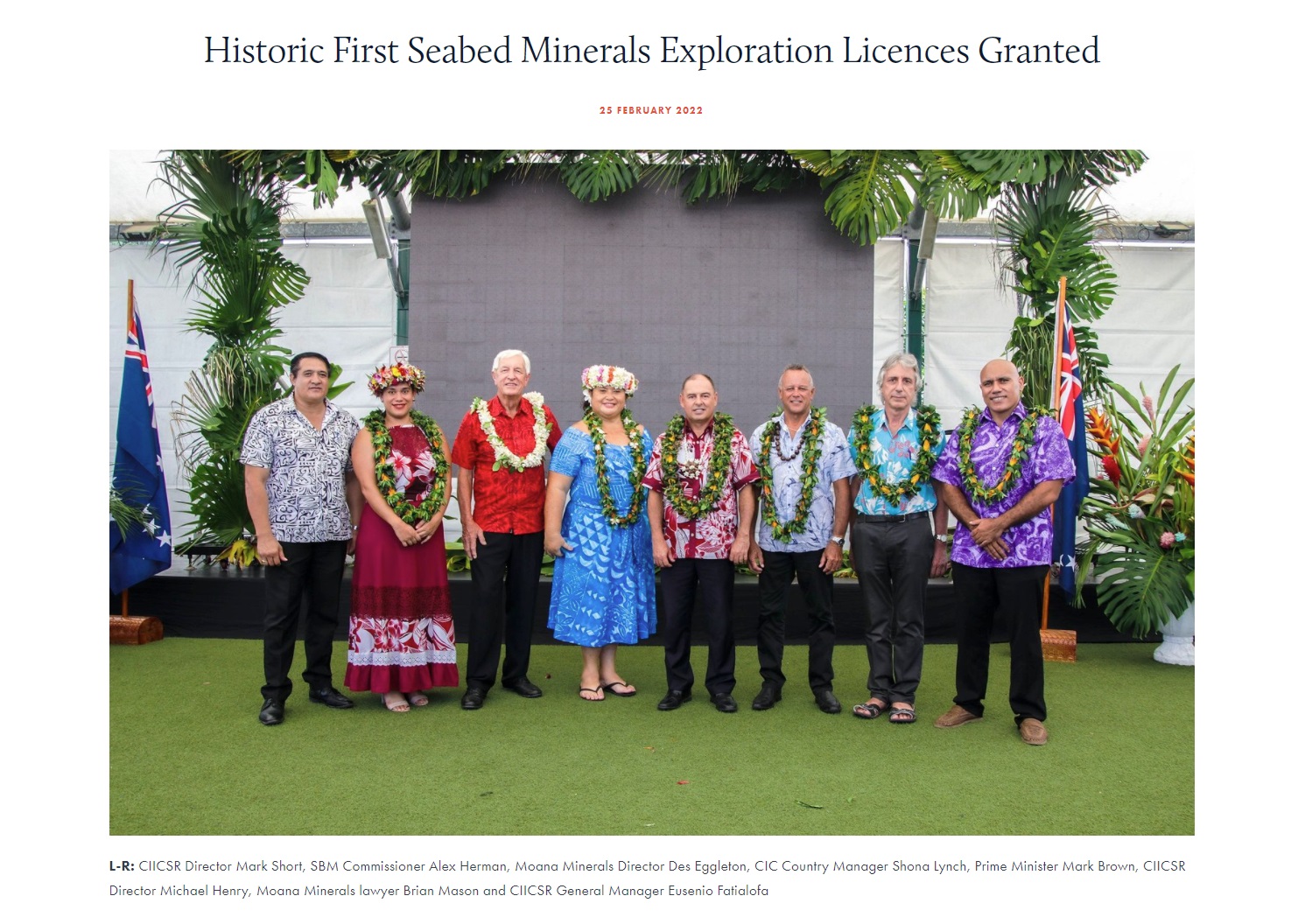
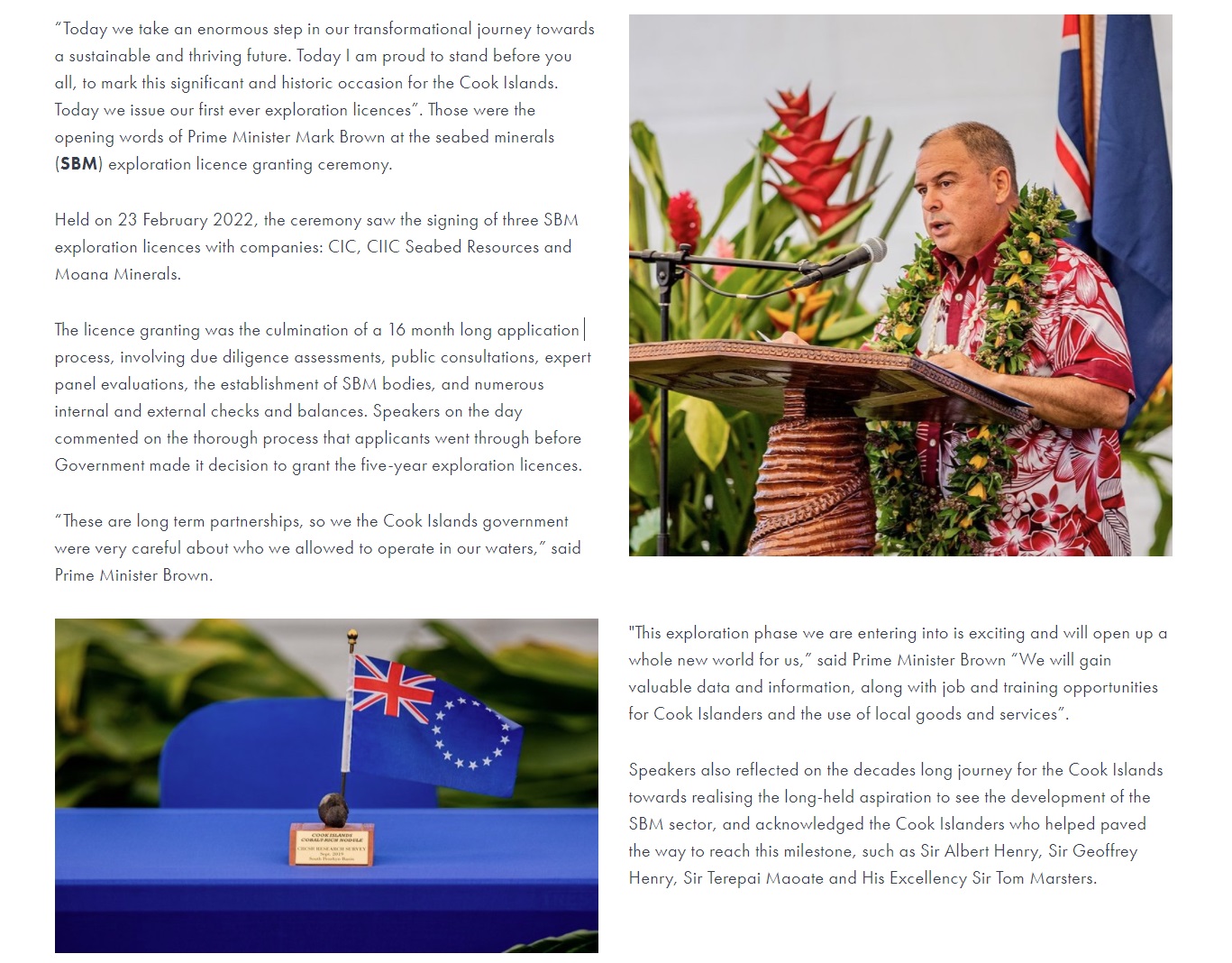
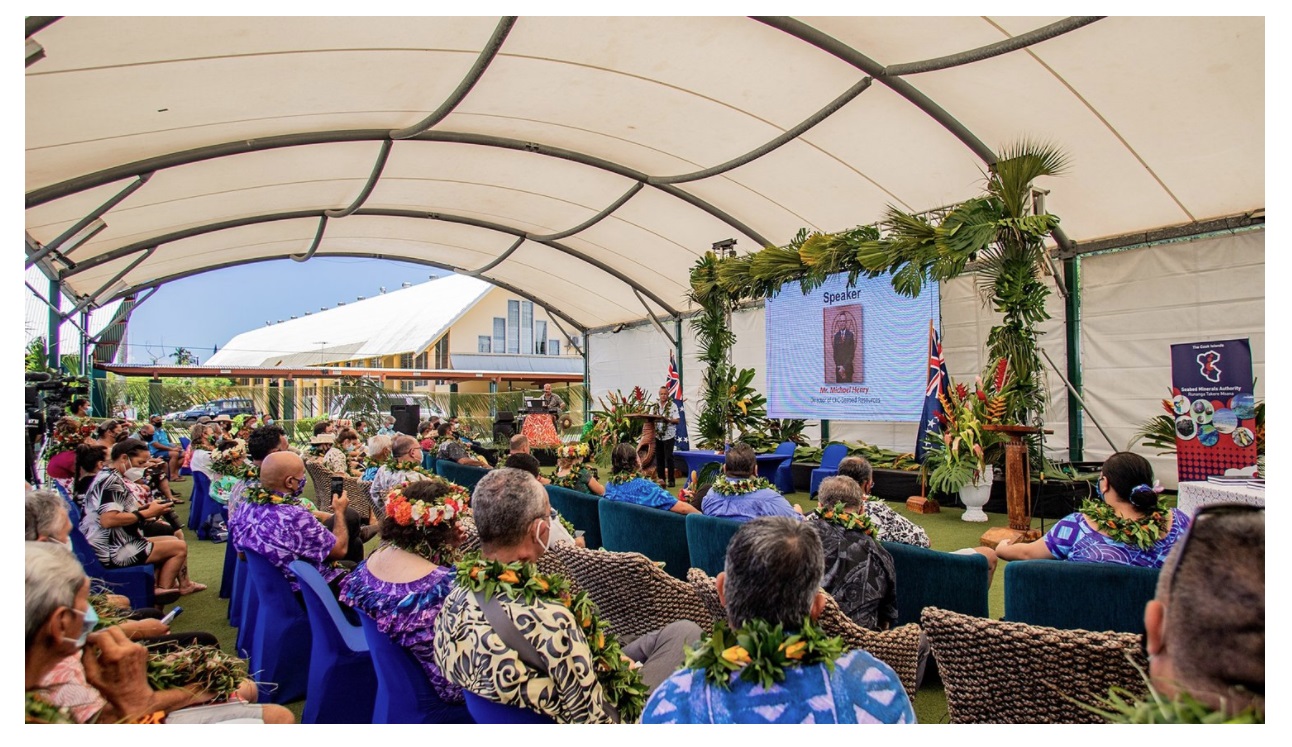
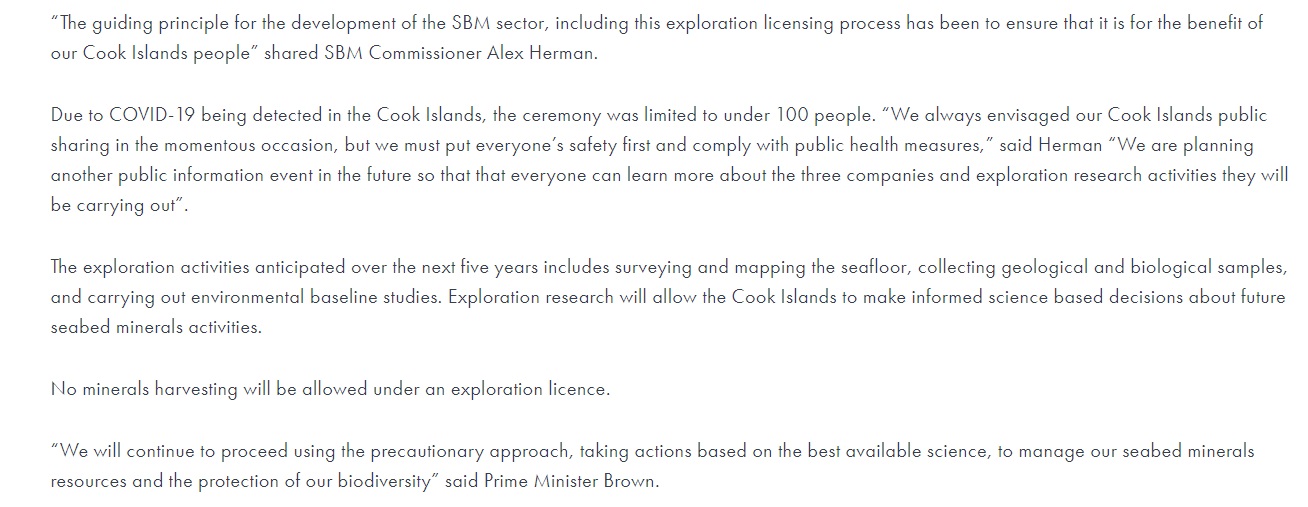
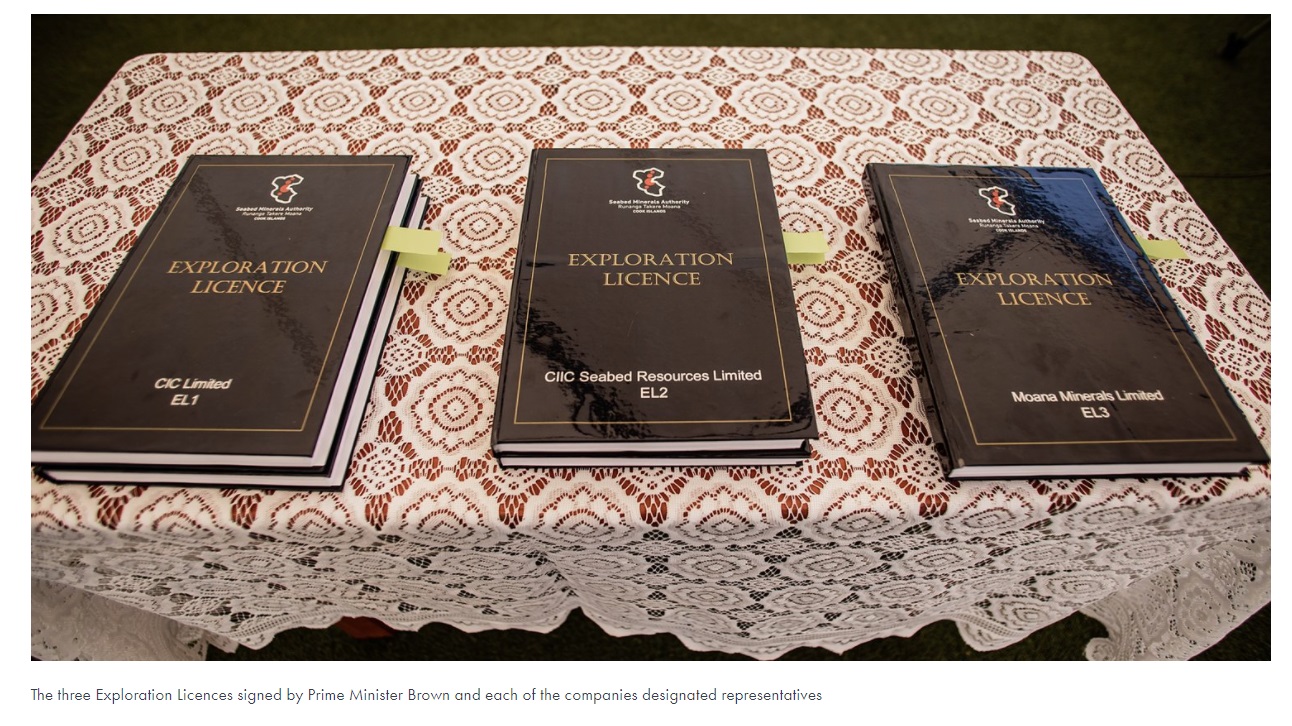
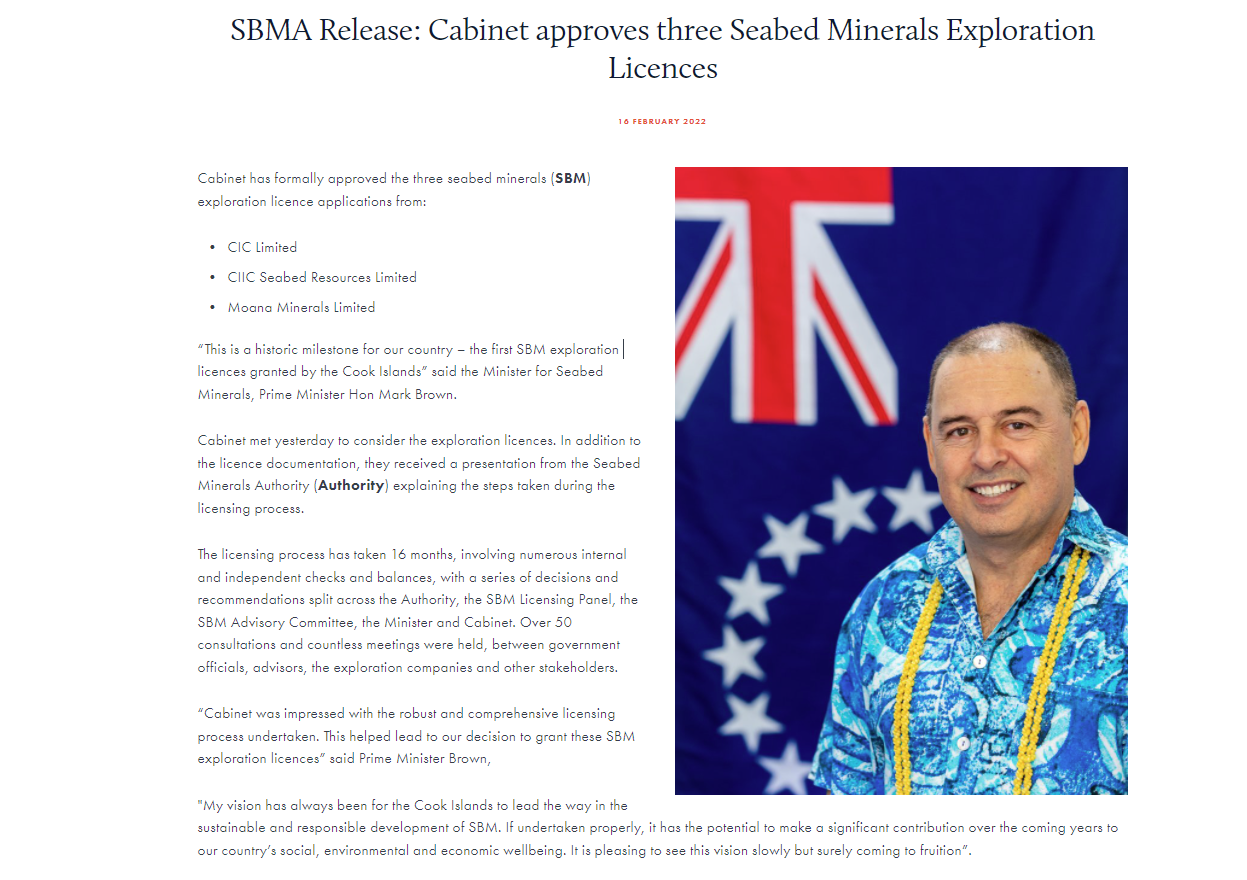
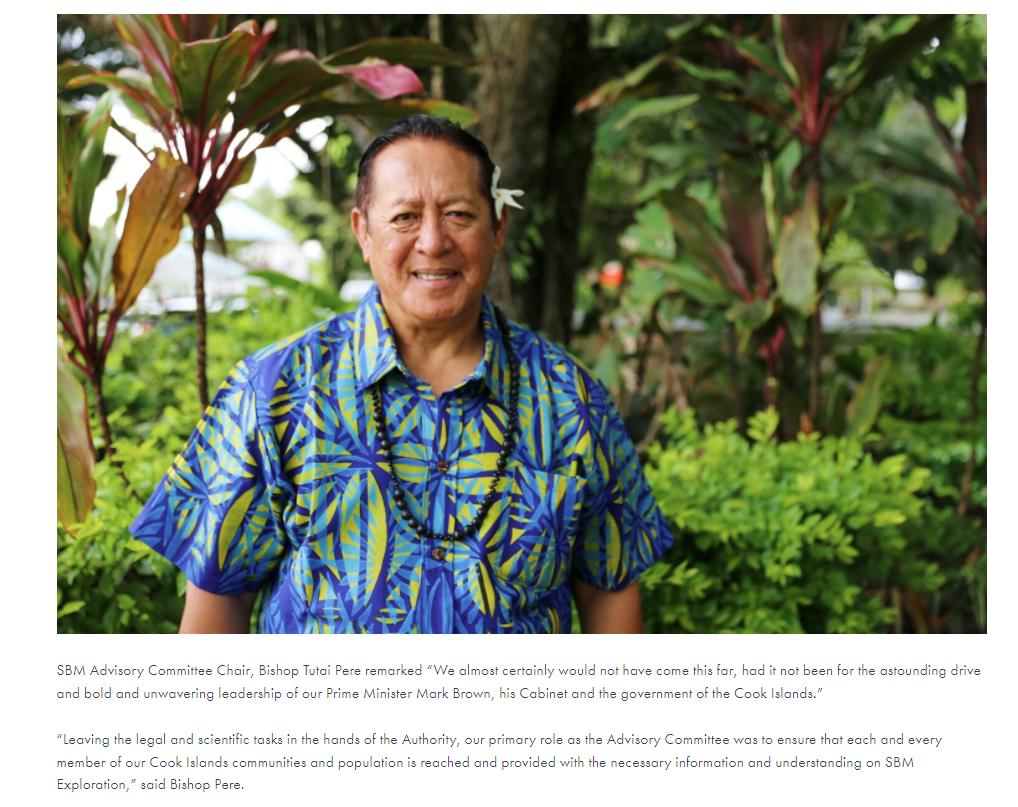
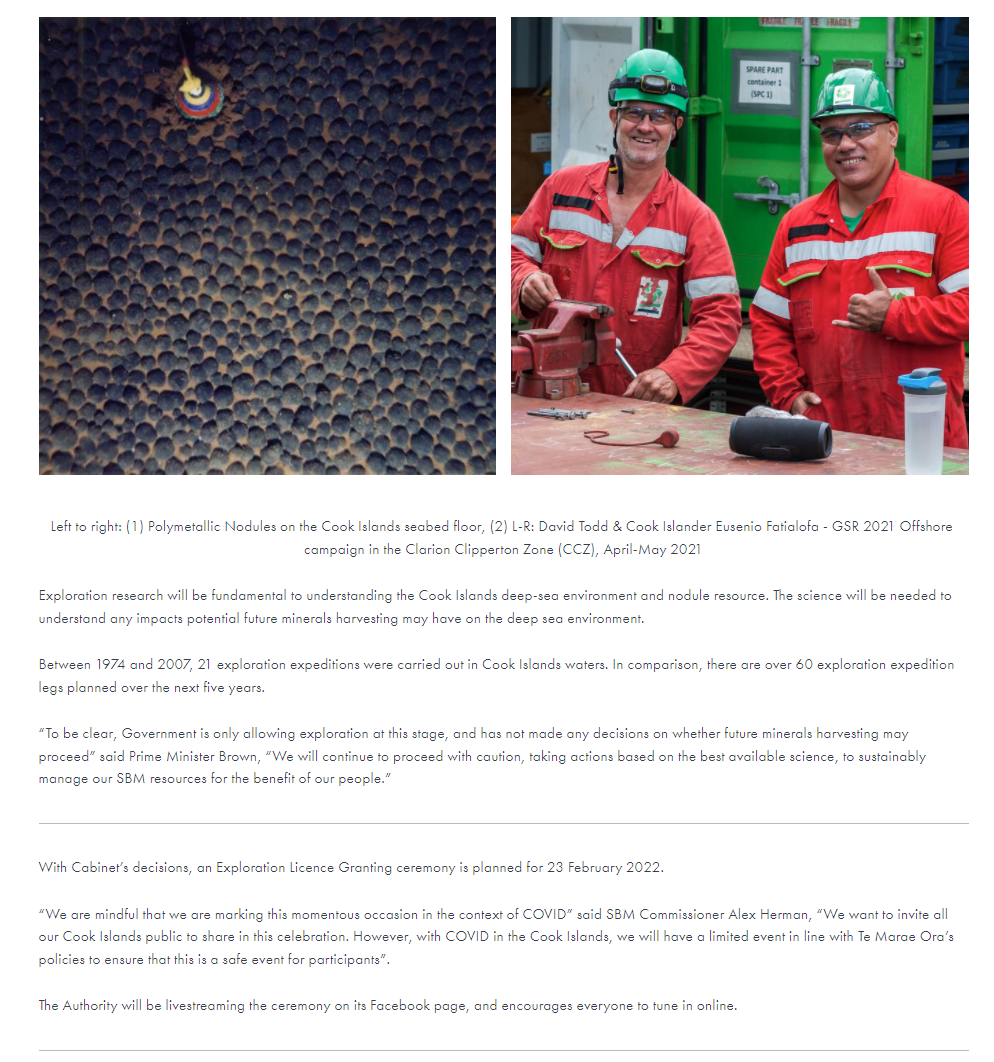
2020
OML – ALTA 2020 NICKEL-COBALT-COPPER CONFERENCE
Dr. Colin Seaborn presents an update on the results of successful metallurgical testing of Cook Island polymetallic nodules.
OML – COOK ISLANDS LAUNCHES NODULE EXPLORATION LICENSING PROGRAM
Cook Islands’ Prime Minister Mark Brown signed a declaration officially opening up areas of their seabed for applicants to submit exploration license applications.
Oct. 22, 2020 – Avarua, Rarotonga, Cook Islands. The Cook Islands announced today the launching of its Exploration License application process for blocks of the seabed containing cobalt-rich polymetallic nodules within its Exclusive Economic Zone (EEZ). The Announcement was made at a launch event held in Rarotonga,
Cook Islands’ Prime Minister Mark Brown signed a declaration officially opening up areas of their seabed for applicants to submit exploration license applications. In 2018 the Cook Islands put a hold on Exploration licensing in order “to ensure a sound legal framework and licensing process was put in place”. Following an extensive review and re-write of the Cook Islands’ Seabed Minerals Act and associated regulations, the new Seabed Minerals Act 2019 (amended by the Seabed Minerals Amendment Bill 2020) and Seabed Minerals (Exploration) Regulations 2020 have been enacted.
Ocean Minerals LLC (OML) entered into an agreement with the Cook Islands government on Oct. 17, 2017, granting OML an exclusive right to apply for an exploration license for polymetallic nodules in respect to a Reserved Seabed Area (RSA) of approximately 23,000 sq. kilometers in the Penrhyn Basin. Based upon this most recent action by the Cook Islands, OML is currently preparing an Exploration License application for submission to the Cook Islands Seabed Minerals Authority, planned for later this year, over our RSA.
In addition to formally opening the process by which OML may apply for an exploration license over our reserved areas, the Cook Islands also announced the launch of a tender offer for applications to explore other blocks within the Cook Islands EEZ.
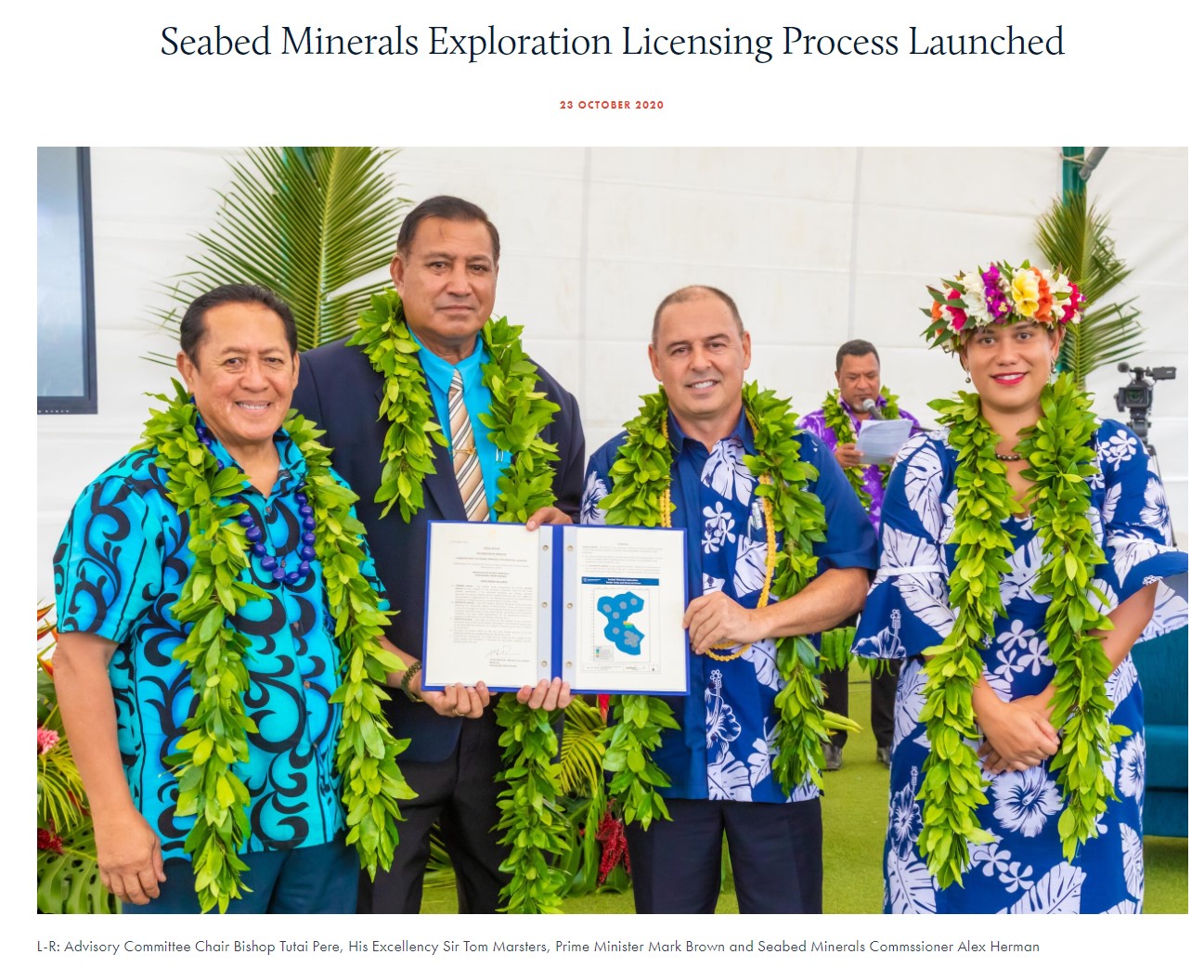
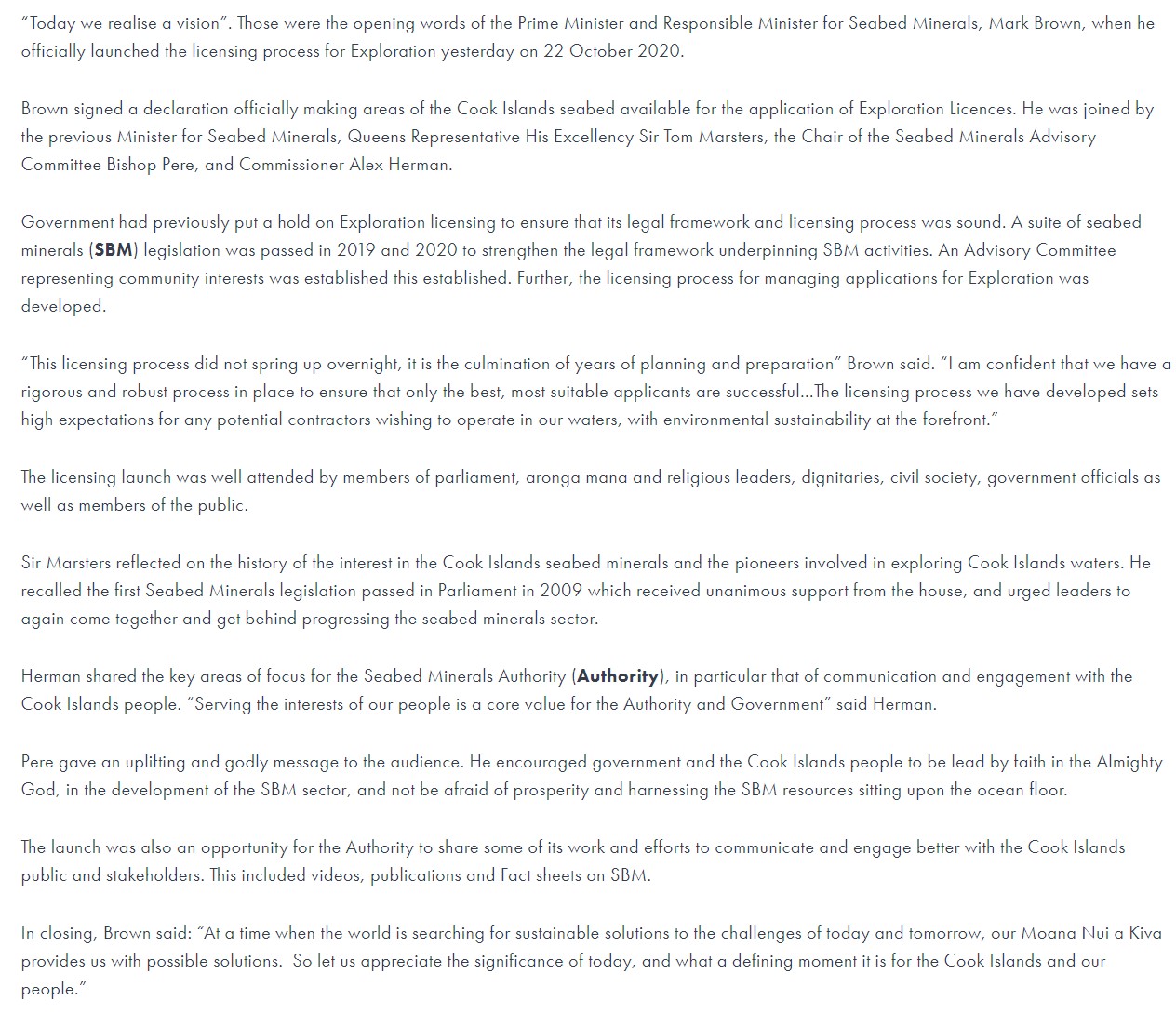
About OML
Ocean Minerals LLC is a private U.S. based company seeking to develop the world’s largest known primary cobalt deposit contained in polymetallic nodules on the seabed in the Cook Islands’ EEZ. In addition to cobalt, the nodules contain potentially economic quantities of nickel, copper, manganese, and rare earth elements.
OML commissioned an independent resource report according to NI-43-101 and JORC standards, prepared by RSC Consulting Ltd., which resulted in an estimate of inferred resources in the OML RSA of 331 million tonnes of nodules (wet weight) at a cobalt grade of 0.5% (based on dry weight), equivalent to approximately one million tonnes of cobalt making it the largest known primary cobalt resource. The resource report also indicated an exploration potential of an additional estimated 300 million tonnes of nodules (wet weight) in the RSA.
In 2019 OML commissioned an NI-43-101 Preliminary Economic Assessment, prepared by AMC Consultants, which concluded a Cook Islands nodule project could be economic at projected cobalt prices. A recent internal economic update that reflects current market conditions and process testing results shows potential positive economics at current depressed metal prices.
For further information contact us at info@omlus.com
OML – TESLA GROWTH
“Deep-sea miners see Tesla growth as signal to pluck cobalt………..” recent article published on E&E CimateWire.
2019
OML – DECEMBER – COOK ISLANDS – DEEP SEA RESEARCH EXPEDITION
Cook Islands participants in the OML research survey
The 8-day research voyage, on the local vessel MV Grinna, was delayed because of poor weather and set off almost 2 weeks later than planned. However, all the local crew and technical team remained optimistic that they would depart and were very keen to join in this historic deep sea research opportunity.
This Seabed Minerals related voyage is being conducted under a Research Application approved by the Cook Islands Research Committee. Basically, it relates to some limited nodule, sediment and biological research, using basic Free Fall Grab sampling, in the OML Reserve area, north of Aitutaki. Friends and family gathered to farewell their loved ones on this exciting adventure.
It is only the 2nd such expedition in the Cook Islands waters in the last 30+ years. Today’s dockside farewell was initiated at the Avatiu Harbour by Seabed Minerals Commissioner, Paul Lynch, saying a word of thanks and best wishes from the Minister of Natural Resources and Minerals, the Hon. Deputy Prime Minister, Mark Brown. Then the OML Research leader, Hans Smit of Ocean Minerals Limited (OML) said a word of thanks to the Cook Islands and the team assembled for this research.
He introduced the 4 representatives of his highly skilled and experienced overseas technical team and noted the excellent caliber and enthusiasm of the 6 Cook Islands volunteers, who have all helped prepare the vessel for departure over the last week – see the table below. The research voyage is conducted under international standards of technical, health and safety requirements, and sanctioned by all relevant Cook Islands authorities, laws and regulations.
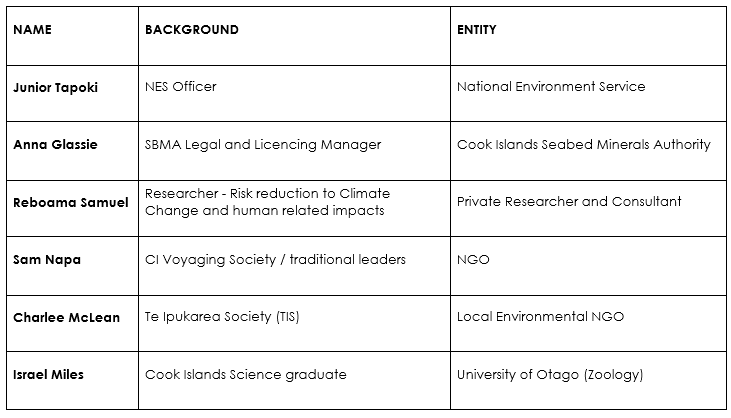
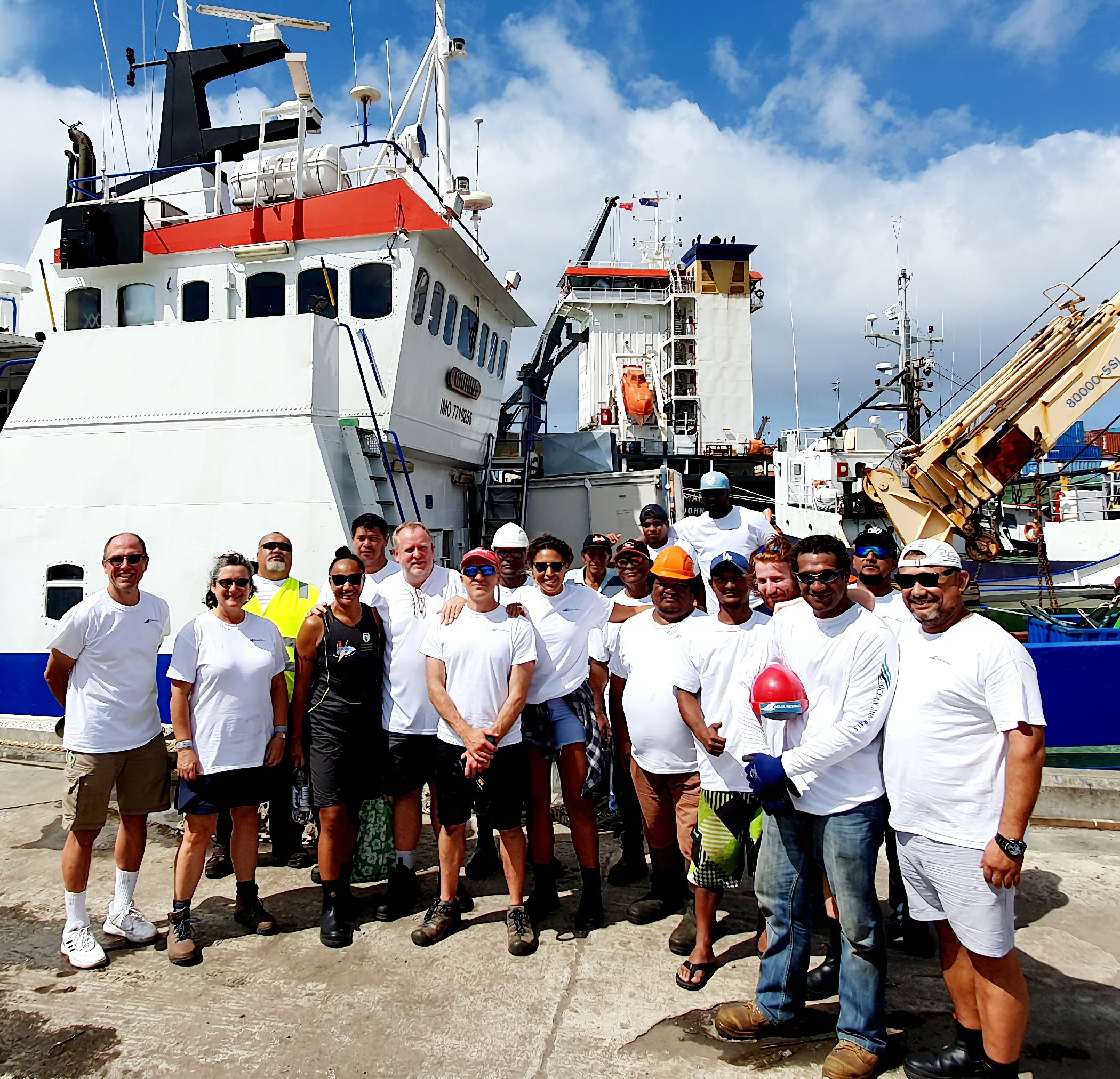
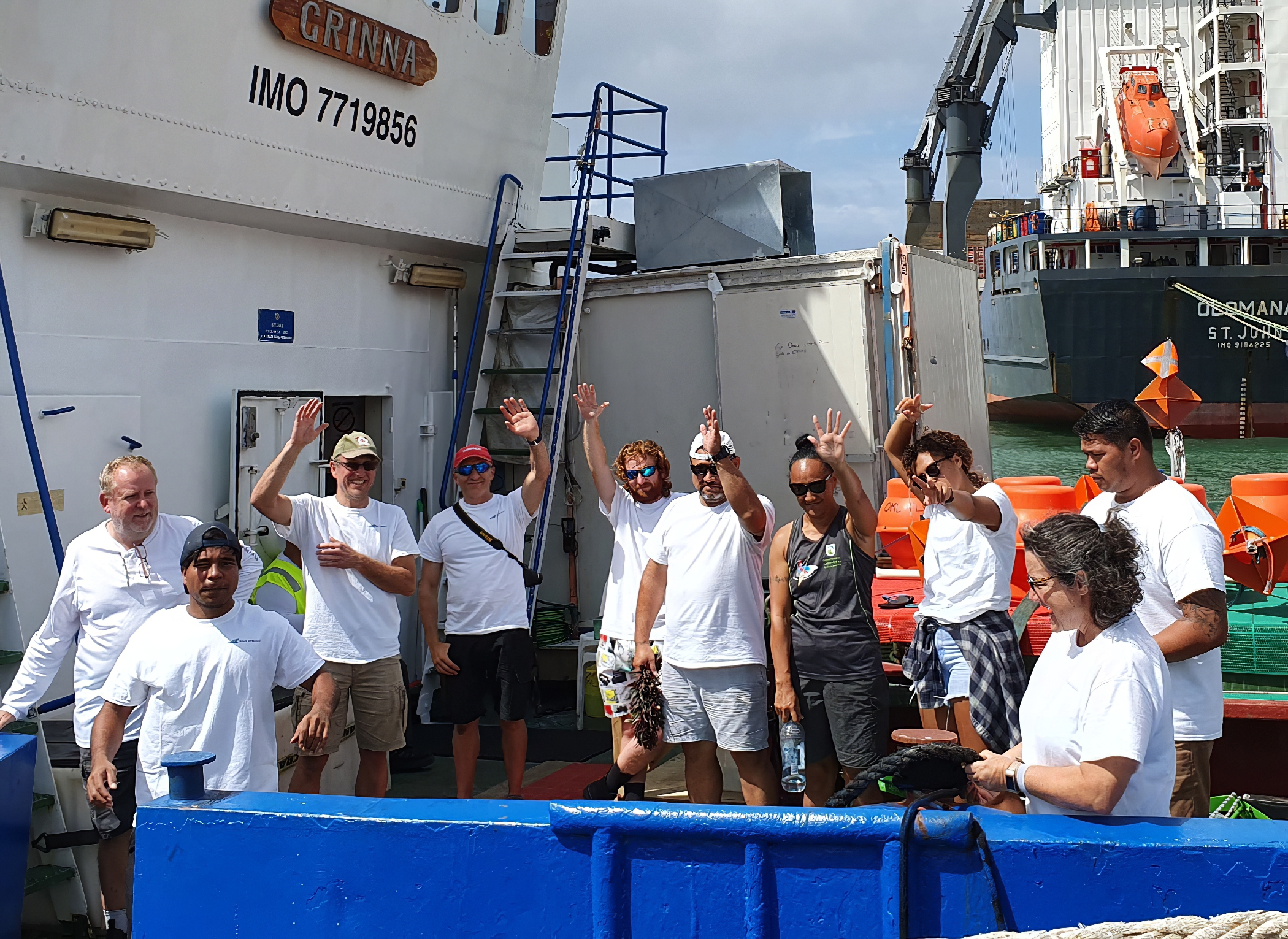
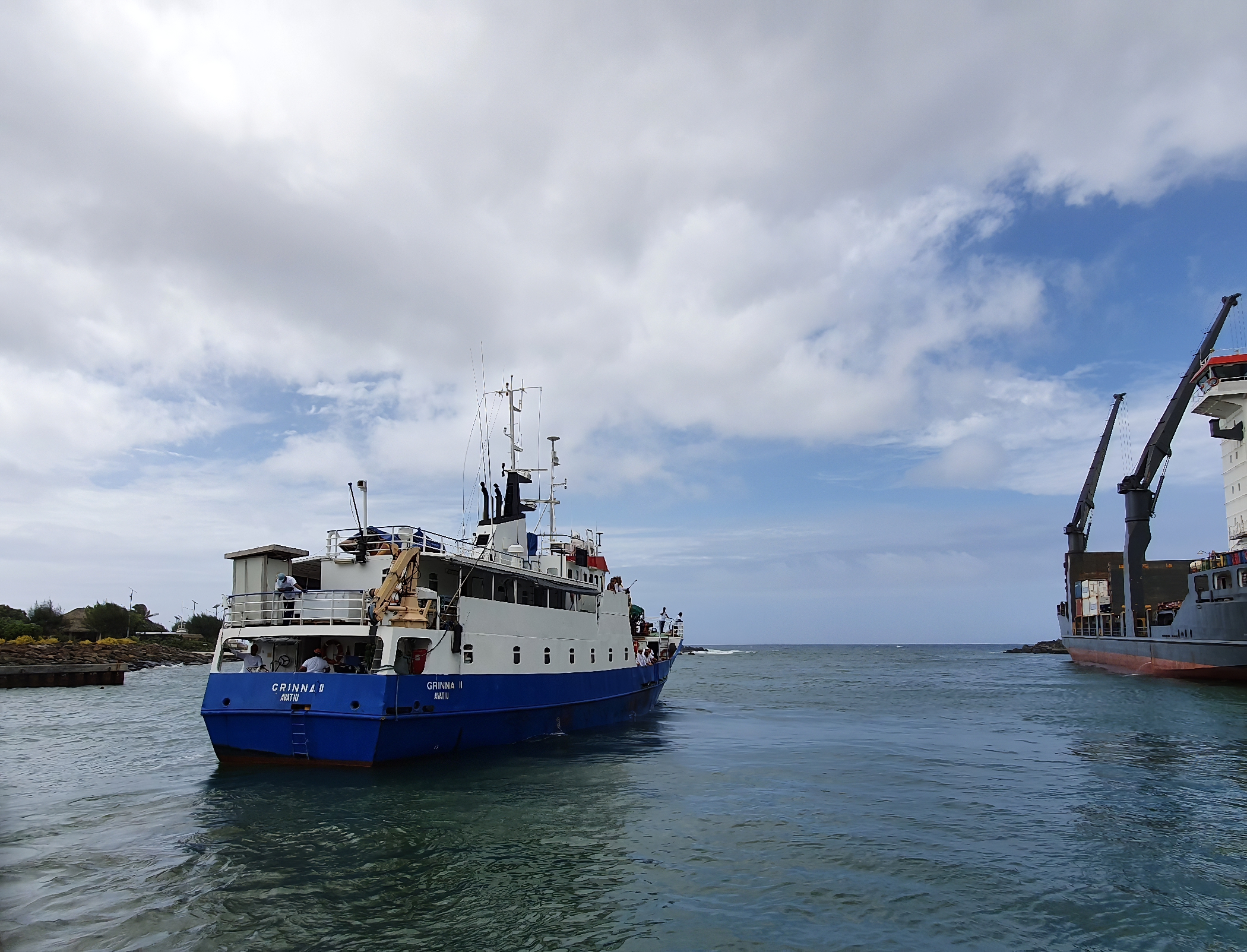
OML – SEPTEMBER – UMC HAINAN, CHINA
Hans Smit, Dave Huber and Karl Winter of OML shall be attending and sponsoring at the Underwater Mining Conference, Hainan, China, 22-27 September 2019.
We also look forward to demonstrating our environmental data collection application – PelagOS
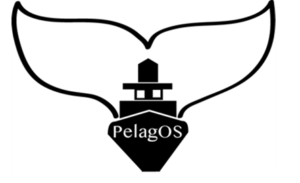
OML – AUGUST – WASHINGTON DC
On 21 August 2019, OML Founder and Chairman John Halkyard and President Hans Smit presented a 1-hour seminar entitled “Mining the Deep Seabed: A viable approach to meeting the critical needs of the U.S. for secure, responsibly sourced metals for a green energy future” as part of the USGS NMIC Seminar series.
In this meeting, OML presented an industry perspective as to the viability of seabed mining as the solution for looming supply deficits and import dependencies for a number of critical metals.
